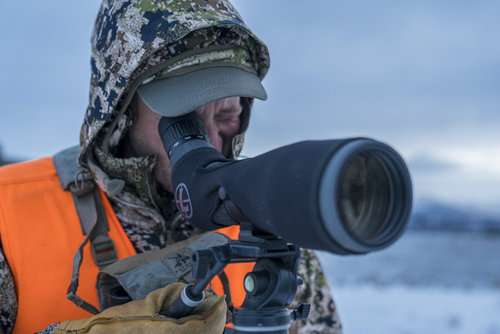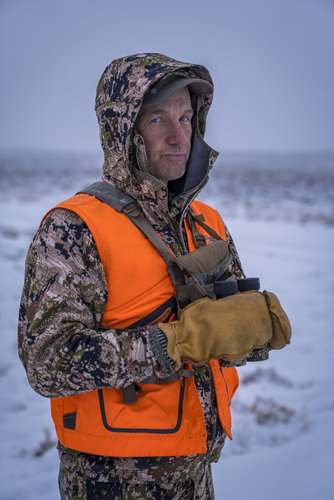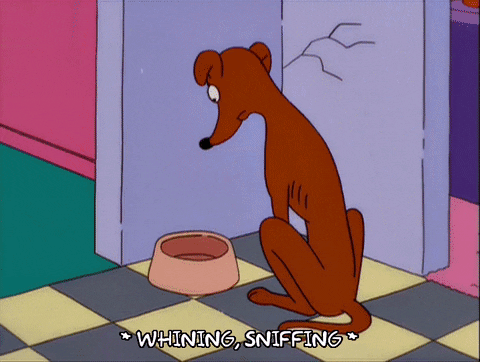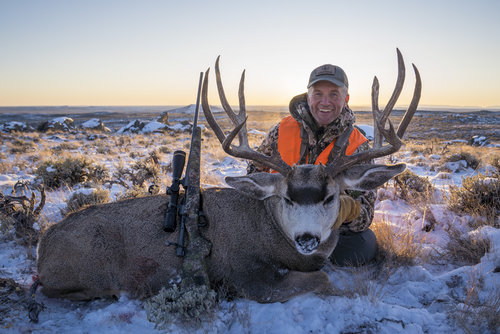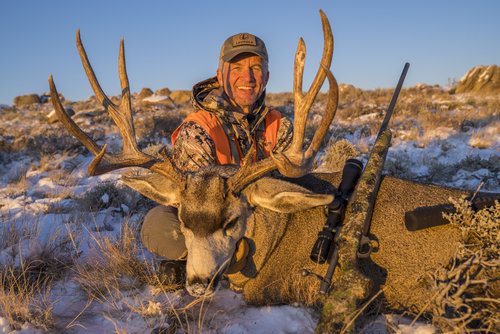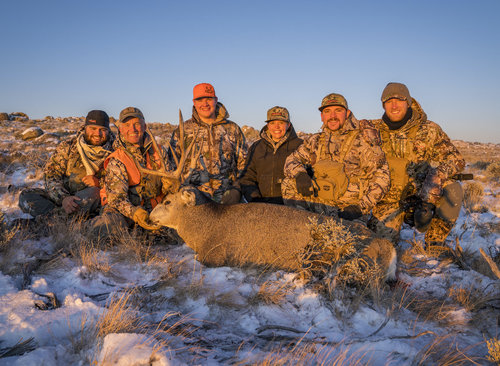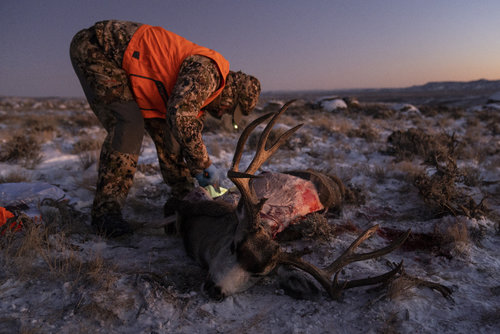I’m at home today, resting for two days in between the last trips and the next trips. Thought I would craft a few lines of a Wyoming deer hunt that we wrapped up this week.
This hunt is a migration hunt. Takes max points in both the special and regular draw. Is surely weather-dependent, but a ton of fun, no matter the weather.
I’ve had my share of “Glory Tags” over the years. This was probably the most relaxing and enjoyable high-demand hunt I have ever had. Lots of locals out on the landscape watching, videoing, and photographing the migrating deer. Many of them are prior tag holders who just like to come out and see the deer. Some are out scouting for the year that they might get the tag.
I was in New Mexico for my Uncle Mike’s elk hunt the week season opened, allowing us the last week of season to hunt this Wyoming deer tag. According to those who were there the opening week, we didn’t miss much by coming toward the end of season.
It is an easy hunt to E-scout for. Tons of information about the migrating deer exists, thanks to the Wyoming Migration Initiative that is operated out of the University of Wyoming. I spent much of the summer reading the migration data that is being collected for mule deer, antelope, elk, bighorn sheep, and moose. It is some of the most compelling scientific information I have ever read.
This is a shameless plug, but if you have not done so already, I suggest you follow the Wyoming Migration Initiative on their website or social media channels. The information they are gathering and the tools they are using for such, are going to have big impacts on how this type of research is done in other herds, in other states. Links below:
Website - https://migrationinitiative.org/
Facebook - https://www.facebook.com/migrationinitiative/
YouTube - https://www.youtube.com/channel/UC-1qijz4SUdhdv3_ucXwQEQ
The biologist and game warden had both stated that the deer numbers are down significantly from the peak prior to the hard winter of 2016-17, complicated by an extended winter on the winter ranges in the spring of 2019. Tags have been cranked down in response to those fluctuating herd dynamics. They were great guys with lots of good information.
When these deer migrate, they come through some pretty narrow corridors, putting the few tagholders in close proximity of each other. That is not a big issue, as there is plenty of ground to find some space and glass for deer that are passing through.
I was surprised how many locals stopped and visited with us upon seeing the Red Titan. They were all great people, all helpful, and all enjoyable to visit with. Visiting with them did break the monotony when the deer were absent.
The first day we arrived, we had a short period before dark to get a lay of the land for the next five days. The first glassing knob I pulled up to had a group of guys a few hundred yards below guttin’ and gillin’ a deer. I could see it was wide when I looked through the binos, so I couldn’t resist walking down to have a peak. They were a group from Utah and the tagholder had shot a great 3x3, 31” wide, heavy, and some “coat hook” stickers coming off the tall G2. I would have shot that buck the first minute of the hunt; it was just that cool.
They asked where the camera crew was. I told them I had the crew stay at the truck, as I didn’t want to impose on their situation with a bunch of cameras in their face. They waived the camera crew down to the kill site and we had a great conversation about how it unfolded and what a great buck it was.
It was exciting to see such a cool buck get taken, knowing I had five days to look for something with the same appeal. That night at the motel was a bit restless, as my mind tried to conjure what bucks might show up in the morning.
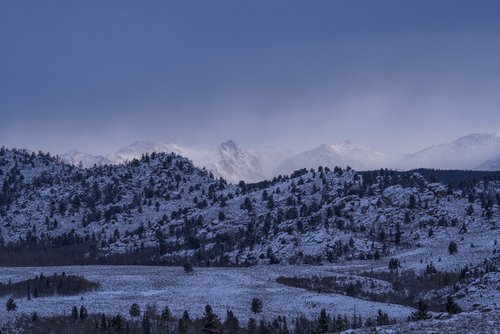
This hunt is a migration hunt. Takes max points in both the special and regular draw. Is surely weather-dependent, but a ton of fun, no matter the weather.
I’ve had my share of “Glory Tags” over the years. This was probably the most relaxing and enjoyable high-demand hunt I have ever had. Lots of locals out on the landscape watching, videoing, and photographing the migrating deer. Many of them are prior tag holders who just like to come out and see the deer. Some are out scouting for the year that they might get the tag.
I was in New Mexico for my Uncle Mike’s elk hunt the week season opened, allowing us the last week of season to hunt this Wyoming deer tag. According to those who were there the opening week, we didn’t miss much by coming toward the end of season.
It is an easy hunt to E-scout for. Tons of information about the migrating deer exists, thanks to the Wyoming Migration Initiative that is operated out of the University of Wyoming. I spent much of the summer reading the migration data that is being collected for mule deer, antelope, elk, bighorn sheep, and moose. It is some of the most compelling scientific information I have ever read.
This is a shameless plug, but if you have not done so already, I suggest you follow the Wyoming Migration Initiative on their website or social media channels. The information they are gathering and the tools they are using for such, are going to have big impacts on how this type of research is done in other herds, in other states. Links below:
Website - https://migrationinitiative.org/
Facebook - https://www.facebook.com/migrationinitiative/
YouTube - https://www.youtube.com/channel/UC-1qijz4SUdhdv3_ucXwQEQ
The biologist and game warden had both stated that the deer numbers are down significantly from the peak prior to the hard winter of 2016-17, complicated by an extended winter on the winter ranges in the spring of 2019. Tags have been cranked down in response to those fluctuating herd dynamics. They were great guys with lots of good information.
When these deer migrate, they come through some pretty narrow corridors, putting the few tagholders in close proximity of each other. That is not a big issue, as there is plenty of ground to find some space and glass for deer that are passing through.
I was surprised how many locals stopped and visited with us upon seeing the Red Titan. They were all great people, all helpful, and all enjoyable to visit with. Visiting with them did break the monotony when the deer were absent.
The first day we arrived, we had a short period before dark to get a lay of the land for the next five days. The first glassing knob I pulled up to had a group of guys a few hundred yards below guttin’ and gillin’ a deer. I could see it was wide when I looked through the binos, so I couldn’t resist walking down to have a peak. They were a group from Utah and the tagholder had shot a great 3x3, 31” wide, heavy, and some “coat hook” stickers coming off the tall G2. I would have shot that buck the first minute of the hunt; it was just that cool.
They asked where the camera crew was. I told them I had the crew stay at the truck, as I didn’t want to impose on their situation with a bunch of cameras in their face. They waived the camera crew down to the kill site and we had a great conversation about how it unfolded and what a great buck it was.
It was exciting to see such a cool buck get taken, knowing I had five days to look for something with the same appeal. That night at the motel was a bit restless, as my mind tried to conjure what bucks might show up in the morning.





